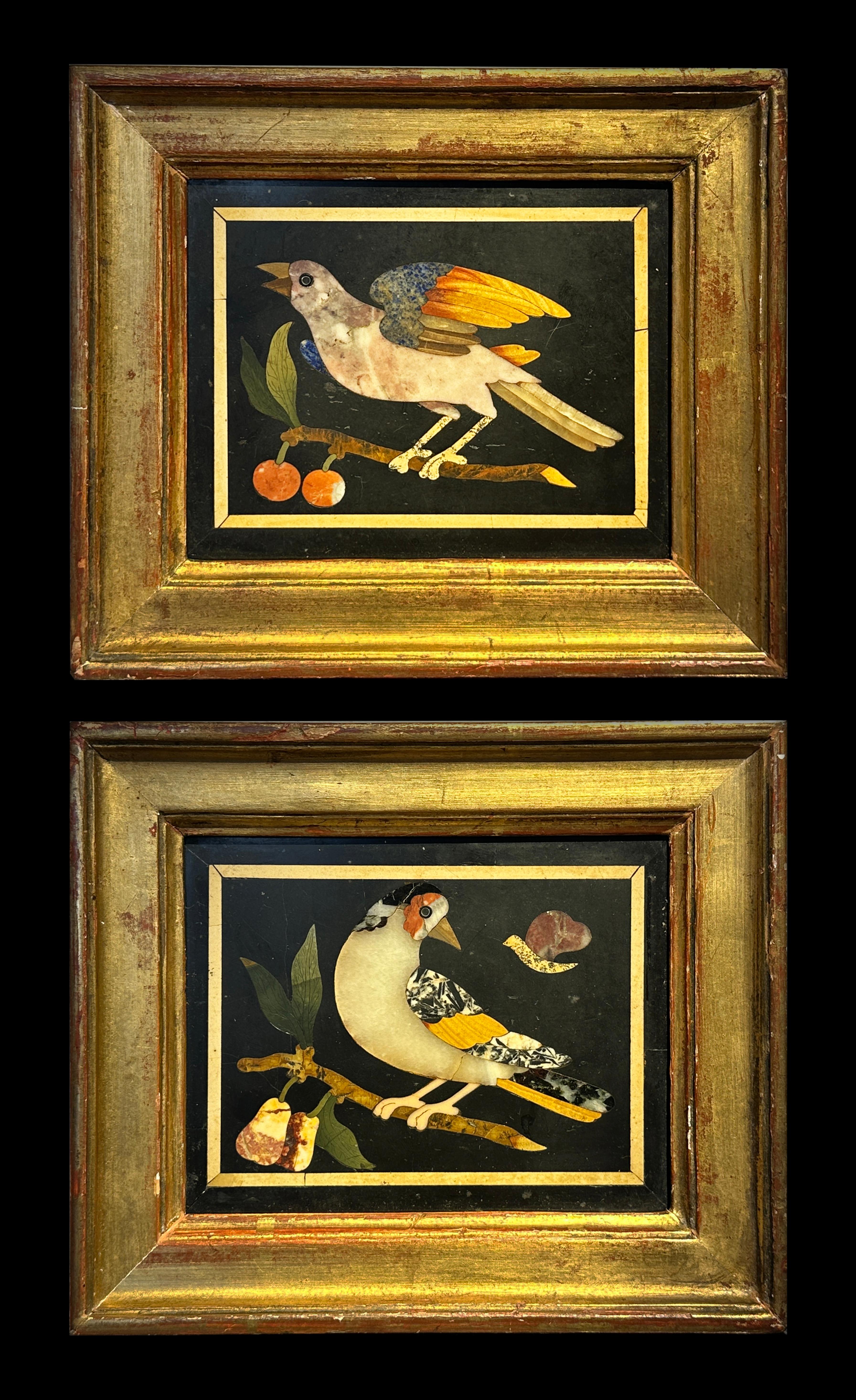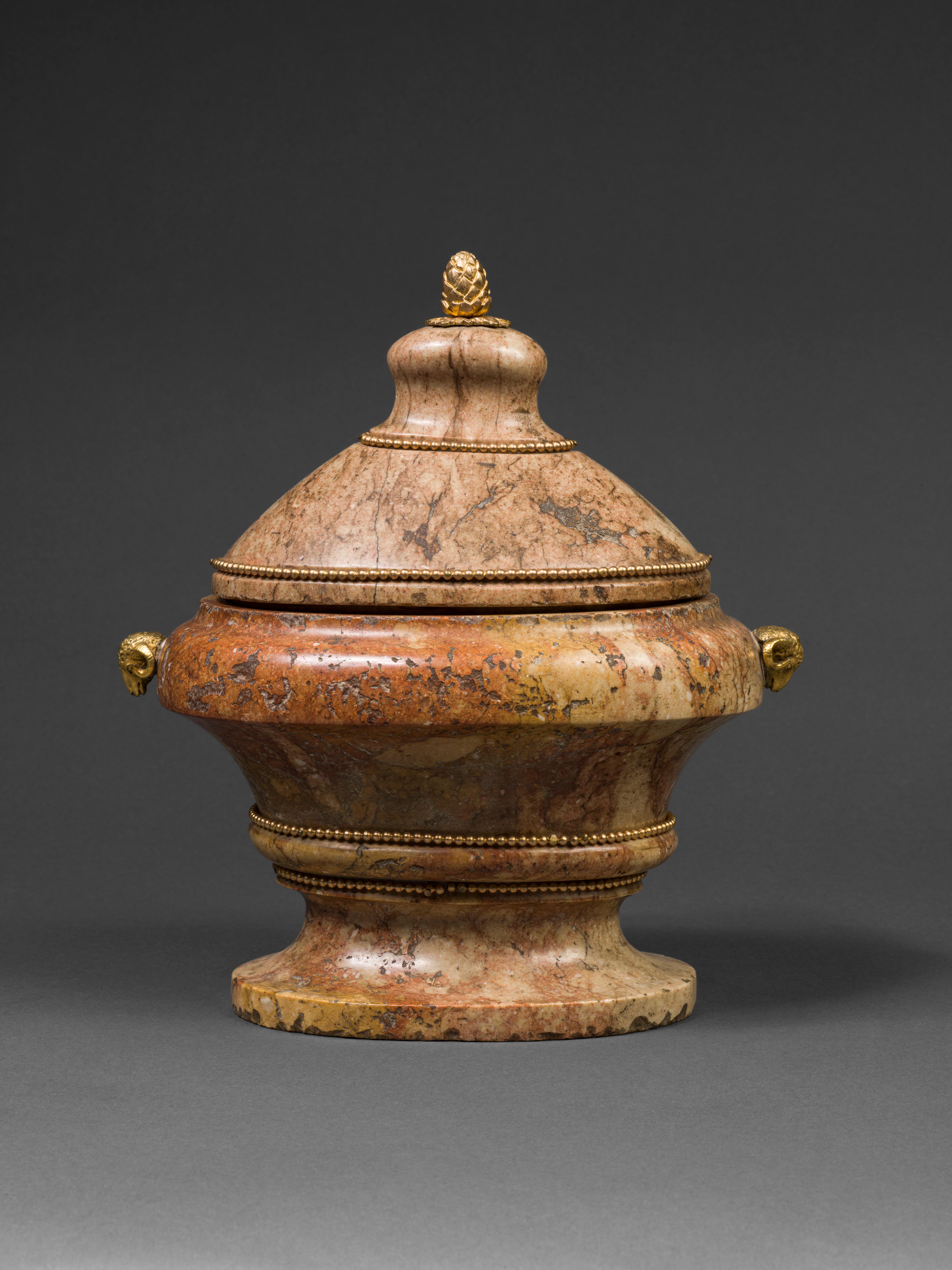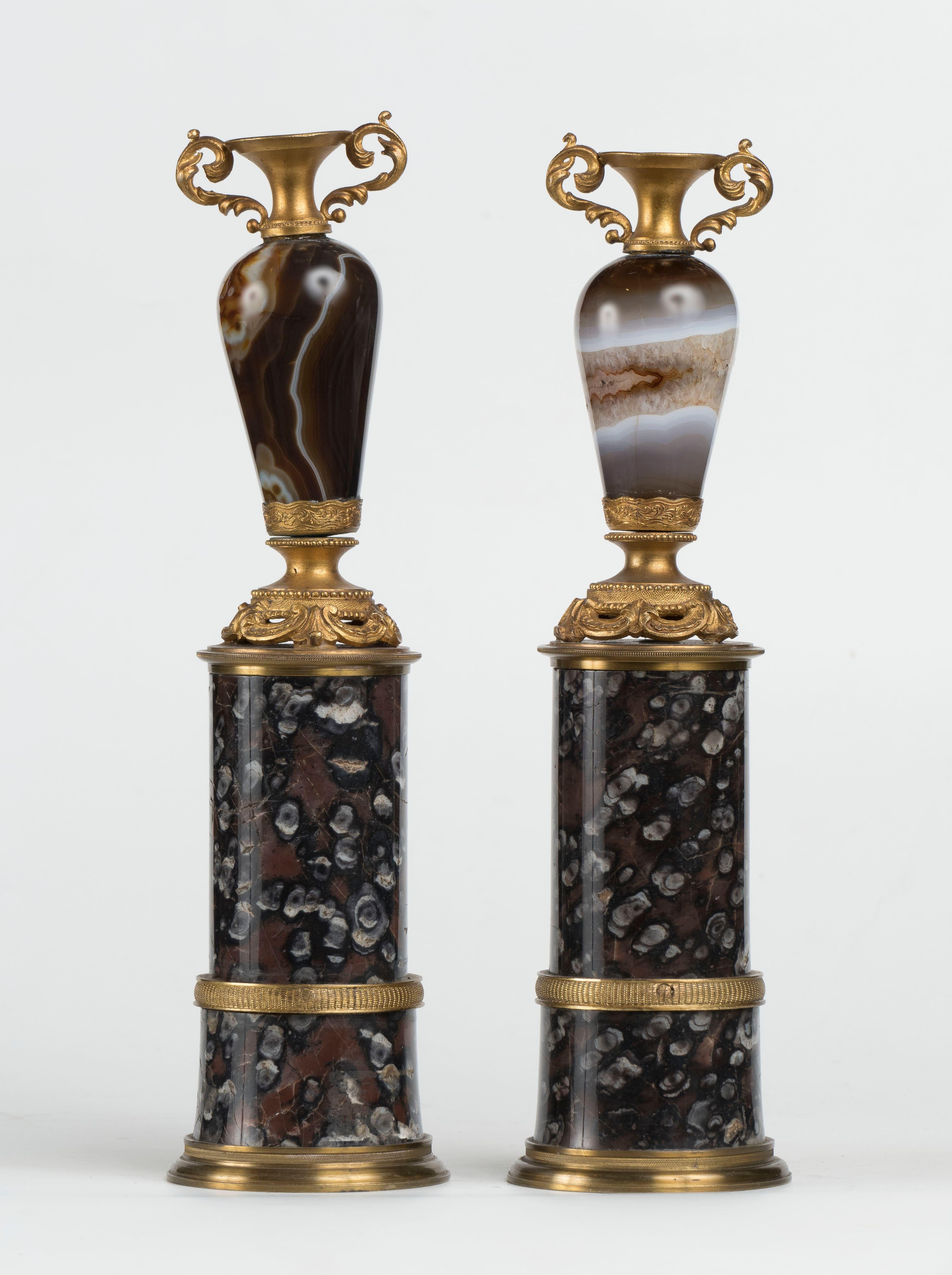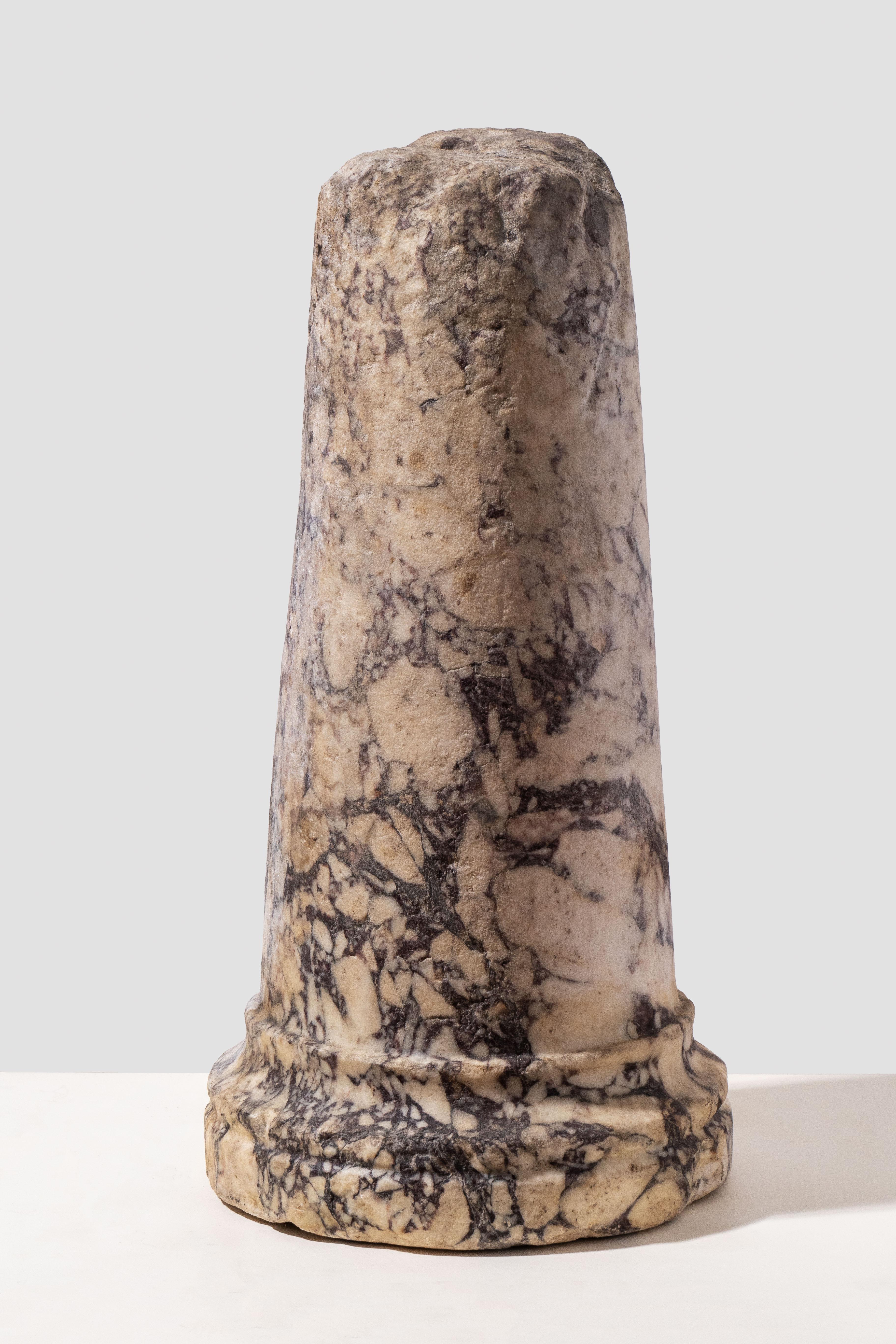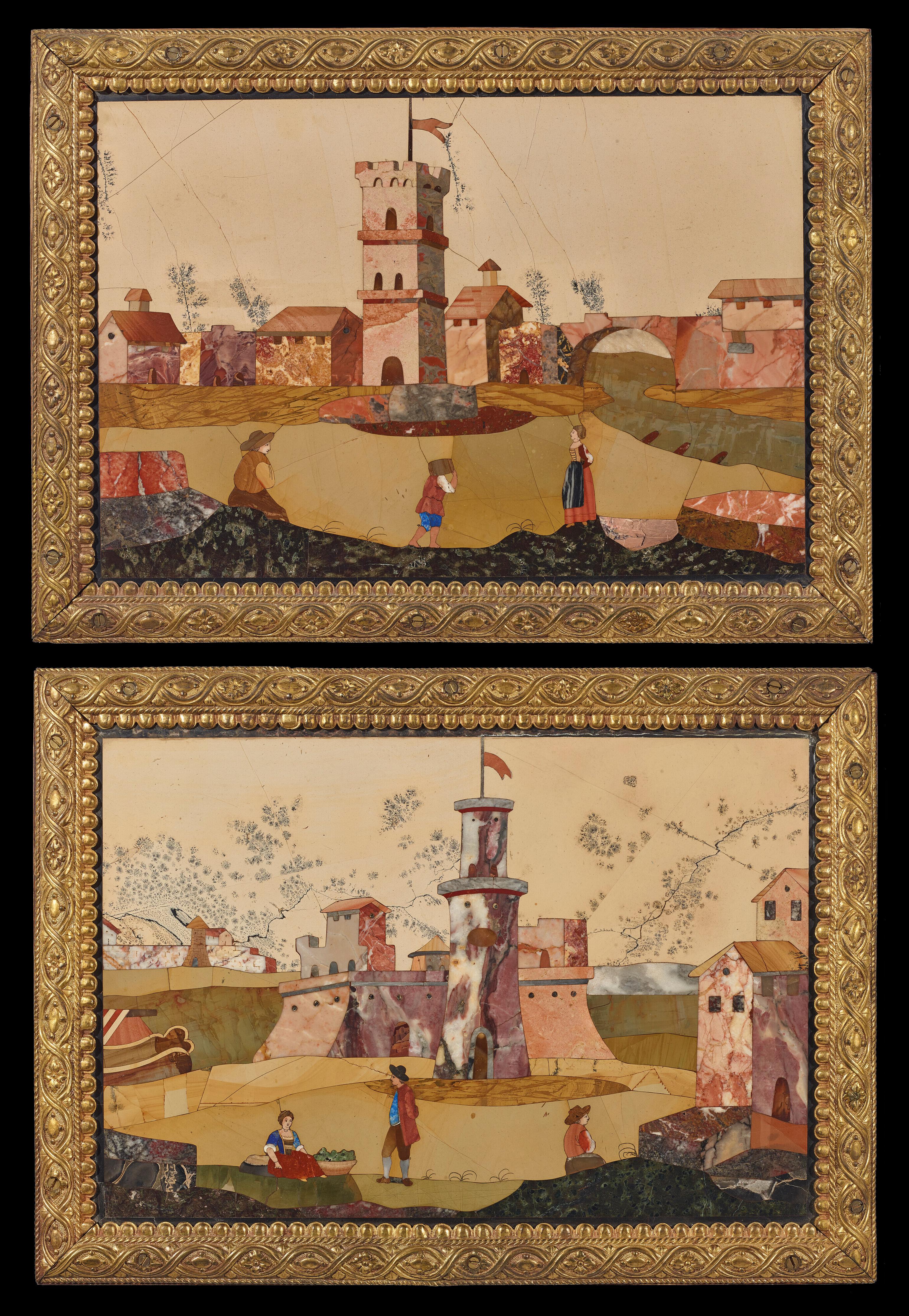Items Similar to Pietre Dure Plaque Of Village Children
Want more images or videos?
Request additional images or videos from the seller
1 of 7
UnknownPietre Dure Plaque Of Village ChildrenCirca 1880
Circa 1880
About the Item
Magnificent and colorful, this enchanting Florentine work of art is not a painting, but upon closer inspection is revealed to be a superb example of the intensive art of pietre dure. Depicting a charming scene of a mother catching her children in the act of a mischievous prank. Rather than paint, this sumptuous piece uses hundreds of different kinds of polished marble and minerals to make this playful scene come to life. Each piece is carefully chosen for color and pattern, cut with the utmost precision and precisely inlaid onto a stone base, thereby creating an image of such beauty and skill as to have the perfect trompe l'oeil effect.
Pietre dure, also known as pietra dura, first developed in antiquity, and originally consisted of shaping stones with small saws, wires and other metal instruments and adding them to decorative objects such as vases or small sculptures. The art was revived during the Renaissance by Italian craftsmen, and the first hard-stone workshop was established by the Medici family in Florence in 1588. The art was also practiced at the courts of Naples, Madrid, Prague, Paris and elsewhere. The Italians were particularly fond of pietre dure and used the technique on everything from monumental cabinets to tiny boxes. From the late 16th century, the colorful stones were arranged on furniture as landscapes and flower scenes. These items were also popular with wealthy aristocrats making their Grand Tour through Italy in the 18th and 19th centuries, who bought them in droves and even sent larger pieces home.
The technique requires that fine marbles and stones be inlaid into a stone base. By using materials of varying colors, artisans were able to create patterns and pictures in much the same manner as a mosaic. The technique was expensive, requiring not only precious materials but also highly skilled craftsmen. As a result, many works were completed using imitation marble and are known as scagliola. True marble and stone pietre dure works such as this are very rare and highly collectible.
Signed "M Zaccagnini" (lower right)
Circa 1880
Plaque: 17" high x 22 1/4" wide (43.18 x 56.52 cm)
Frame: 22" high x 27 1/8" wide (55.88 x 68.9 cm)
- Creation Year:Circa 1880
- Dimensions:Height: 22 in (55.88 cm)Width: 27.13 in (68.92 cm)Depth: 2 in (5.08 cm)
- Medium:
- Period:
- Condition:
- Gallery Location:New Orleans, LA
- Reference Number:
About the Seller
5.0
Vetted Seller
These experienced sellers undergo a comprehensive evaluation by our team of in-house experts.
Established in 1912
1stDibs seller since 2013
13 sales on 1stDibs
Typical response time: 4 hours
- ShippingRetrieving quote...Ships From: New Orleans, LA
- Return PolicyThis item cannot be returned.
More From This SellerView All
- Clio by Studio of RomanelliLocated in New Orleans, LAStudio of Raffaello Romanelli Early 20th Century Italian Clio Inscribed "Executé sous la Direction du Prof. Romanelli" (on base) Marble Clio, the muse of history from Greek mytho...Category
Early 20th Century Figurative Sculptures
MaterialsMarble
- CoupleBy Agustín CárdenasLocated in New Orleans, LAInfused with a crisp modernity and subtle sensuality, this bronze sculpture by Cuban-born artist Agustin Cárdenas is an exceptional example of late-2...Category
20th Century Modern Figurative Sculptures
MaterialsMarble, Bronze
- MasqueradeBy Fortunato GalliLocated in New Orleans, LAMasquerade, a traditional yet playful composition by Fortunato Galli, reflects the realism and intricacy that defined Italian sculpture at the end of the 19th century. Magnificently ...Category
19th Century Other Art Style Figurative Sculptures
MaterialsMarble
- THE LAST DAYS OF NAPOLÉON BYLocated in New Orleans, LAThis highly evocative bronze by Vincenzo Vela captures the deposed Emperor Napoléon on his deathbed, holding a map of Europe and lost in thought about what might have been. Remarkable among most portrayals of the exiled leader, this highly detailed sculpture depicts Napoléon at his most vulnerable. Nonetheless, Vela perfectly captures his still-heroic bearing, which imparts to this work a monumental quality and quiet dignity. The mate to this figure is the colossal marble at the Musée du Château de Malmaison, which was shown at the Paris Salon of 1867. The founder of the verismo movement in Italy, Vela was one of the great exponents of realism in sculpture. Born in Ligornetto, Switzerland in 1820, he studied under celebrated sculptor, Benedetto Cacciatori. He was also influenced both by the work of Tuscan sculptor Lorenzo Bartolini, who seamlessly combined neoclassicism with naturalism and the romantic painting of Francesco Hayez...Category
19th Century Realist Figurative Sculptures
MaterialsMarble, Bronze
- Bust of Pope Innocent XI Odescalchi by Domenico GuidiLocated in New Orleans, LAThis monumental bust is a museum-quality example of Roman Baroque sculpture. Crafted by the legendary Domenico Guidi and carved from Carrara marble, the impressive portrait captures the visage of Pope Innocent XI, Benedetto Odescalchi (1611-1689). It presents a larger-than-life example of Guidi’s remarkable skill as a sculptor, which ultimately made his workshop one of the most important in Rome during his age. Today, his works are rarely found on the market, particularly his extraordinary works in marble. Pope Innocent XI was born Benedetto Odescalchi into an Italian noble family of prominent bankers. Spending his early years in banking, he eventually turned to the law, earning his doctorate in 1639. His background would serve him well in his service to the papacy, and he became known as a frugal and devout member of the Church. In 1676, he was unanimously elected Pop after the death of Clement X. During his nearly 13-year reign, he instilled his own personal ideals of austerity and frugality onto the Church, with a deep commitment to reform and piety. He is captured here by Guidi in his traditional Pope’s mozzetta and camauro cap. A wide stole is draped over his shoulders, ornamented by acanthus leaves and the coat of arms of the Odescalchi family. It displays Guidi’s mastery over the chiaroscuro effect, particularly in the high level of contrast in his cheeks and his eyes, which Guidi achieved through various methods of high polish. A very similar portrait sculpture of Pope Innocent XI by Guidi can be found in the collection of the Royal Castle in Warsaw. The Warsaw bust belongs to a series of portraits of popes which the Odescalchi family commissioned from Domenico Guidi in the 1690s. Compared to that example, the present bust is far more dramatic, with deeper cut lines and a more precise expression. It is likely that the present piece was seen by the Odescalchi family, who ordered a similar one to be made. The piece was almost certainly intended to be displayed in a niche, given its dramatic cutting and its roughly carved back. Others of Guidi’s busts can be found in important collections throughout Italy, England and the United States, though many of these are lesser bronze repetitions. A bronze bust of the Pope Alexander VIII by Guidi is currently in the collection of the Victoria & Albert Museum (London), while a terracotta version of the same is in the Los Angeles County Museum. A bronze of Pope Alexander VIII can be found in the Princely Collection of Lichtenstein, and his impressive marble papal bust of Clement IX graces the pope’s tomb in Santa Maria Maggiore. The present bust of Pope...Category
17th Century Baroque Figurative Sculptures
MaterialsMarble
- La Pensée Volante (The Flying Thought)By Agustín CárdenasLocated in New Orleans, LAThis striking conceptualization of "a flying thought" was composed by the famed Cuban-born artist Agustin Cárdenas. Entitled La Pensée Volante (The Fl...Category
19th Century Modern Abstract Sculptures
MaterialsMarble, Bronze
You May Also Like
- PAIR OF FLORENTINE ANTIQUE PIETRA DURA PLAQUES WITH BIRDS, 18th CenturyLocated in Milan, ITPAIR OF PIETRA DURA PLAQUES WITH BIRDS Florence, 18th Century pietre dure in gilt wood frame 9.5 x 12 cm (3 3/4 x 4 3/4 in) without frame 15 x 17.2 cm (6 x 6 3/4 in) with frameCategory
18th Century More Art
MaterialsMarble
- 18th Century Italian Pink Marble Urn with lid and bronze mountsLocated in Milan, ITTypical of 18th Century Rome, this fascinating pink marble urn with lid is a wonderful example of Italian decorative arts. Embellished with bronze moun...Category
Mid-18th Century More Art
MaterialsMarble, Bronze
- PAIR OF FRENCH MOUNTED PIETRA DURA URNS, 19TH CENTURYLocated in Milan, ITPAIR OF PIETRA DURA MOUNTED URNS France, 18th and 19th Century Amethyst and breccia pavonazzetto height 24.5 cm height 9 3/4 inCategory
18th Century More Art
MaterialsMarble, Bronze
- 18th Century Italian breccia circular vase probably carved in RomeLocated in Milan, IT18th Century Italian breccia circular vase probably carved in Rome ROUND BRECCIA TAZZA, 18th Century Breccia H 29 cm D 39 cmCategory
18th Century More Art
MaterialsMarble
- ANTIQUE ITALIAN ARCHITECTURAL FRAGMENT OF PLINTH IN 'BRECCIA MEDICEA' MARBLELocated in Milan, ITBRECCIA FRAGMENT PLINTH Italy, 18th Century Breccia medicea 55 x d 25 cm 21 3/4 x d 9 3/4 inCategory
18th Century More Art
MaterialsMarble
- PAIR OF FLORENTINE ANTIQUE PIETRA DURA PLAQUES WITH BRONZE FRAME, 18th CenturyLocated in Milan, ITPAIR OF PIETRA DURA PLAQUES WITH LANDSCAPES Italy, Florence, 18th Century pietre dure in gilt bronze frame 28.5 x 39 cm (11 1/4 x 15 1/4 in) with frame 23 x 33 cm (9 x 13 in) withou...Category
18th Century More Art
MaterialsMarble
